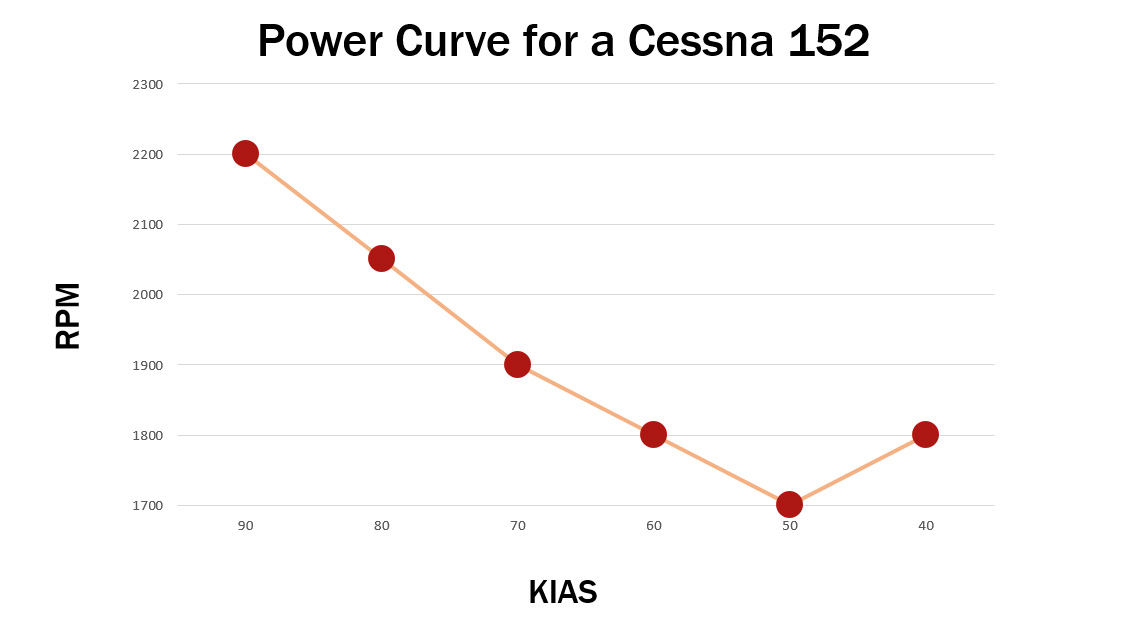Training Tip: Flight in a curved universe
A page of handwritten notes from a long-ago flight lesson in a Cessna 152 contains the airspeed and engine-power data gathered that day to create a power curve graph for the aircraft.

Have you constructed a power curve for your trainer? The benefits of the exercise are numerous and long-lasting.
Another practical benefit of plotting a power curve is learning the approximate power settings necessary to produce the routine airspeeds you use, eliminating in future training flights those frustrating and time-wasting cycles of chasing airspeeds by guessing at power-and-pitch combinations while struggling to maintain the assigned altitude.
Plot your power curve by establishing flaps-up level flight at an airspeed in your trainer’s low cruise airspeed range, then decelerate in 10-knot increments to minimum controllable airspeed. Your instructor can record the power setting that works at each airspeed stepdown.
It doesn’t take long; after the flight, plot the rpm or manifold-pressure settings against a vertical axis, and the airspeeds along a horizontal axis, as shown. Connect the dots and study the resulting graph.
According to the flight notes, 2,200 rpm produced 90 knots indicated airspeed in the Cessna 152. Slowing to 80 KIAS required a 150-rpm power reduction to 2,050 rpm; slowing to 70 KIAS came with a power reduction to 1,900 rpm.
Reducing airspeed to 60 KIAS, then to 50 KIAS, each required only 100-rpm power changes as the angle of attack entered a realm of higher lift to drag (the realm where you encounter your aircraft’s recommended best-glide speed.)
Slowing from 50 knots KIAS to 40 KIAS required a 100-rpm increase, however, as induced drag spiked in the neighborhood of the critical AOA.
Note a power-curve curiosity: It took 1,800 rpm to maintain level flight at 60 KIAS—the same power it took to maintain minimum-controllable 40 KIAS after the power curve reversed its downward trend.
Because constructing a power curve helps build skill to set airspeeds quickly, from there it is a simple matter to learn constant-airspeed climbs and descents.
For each 100-foot-per-minute change in vertical speed, make a 100-rpm power change. The aircraft, if correctly trimmed, should enter the desired climb or descent at or very near its last trimmed airspeed—no pilot’s pitch inputs required.

